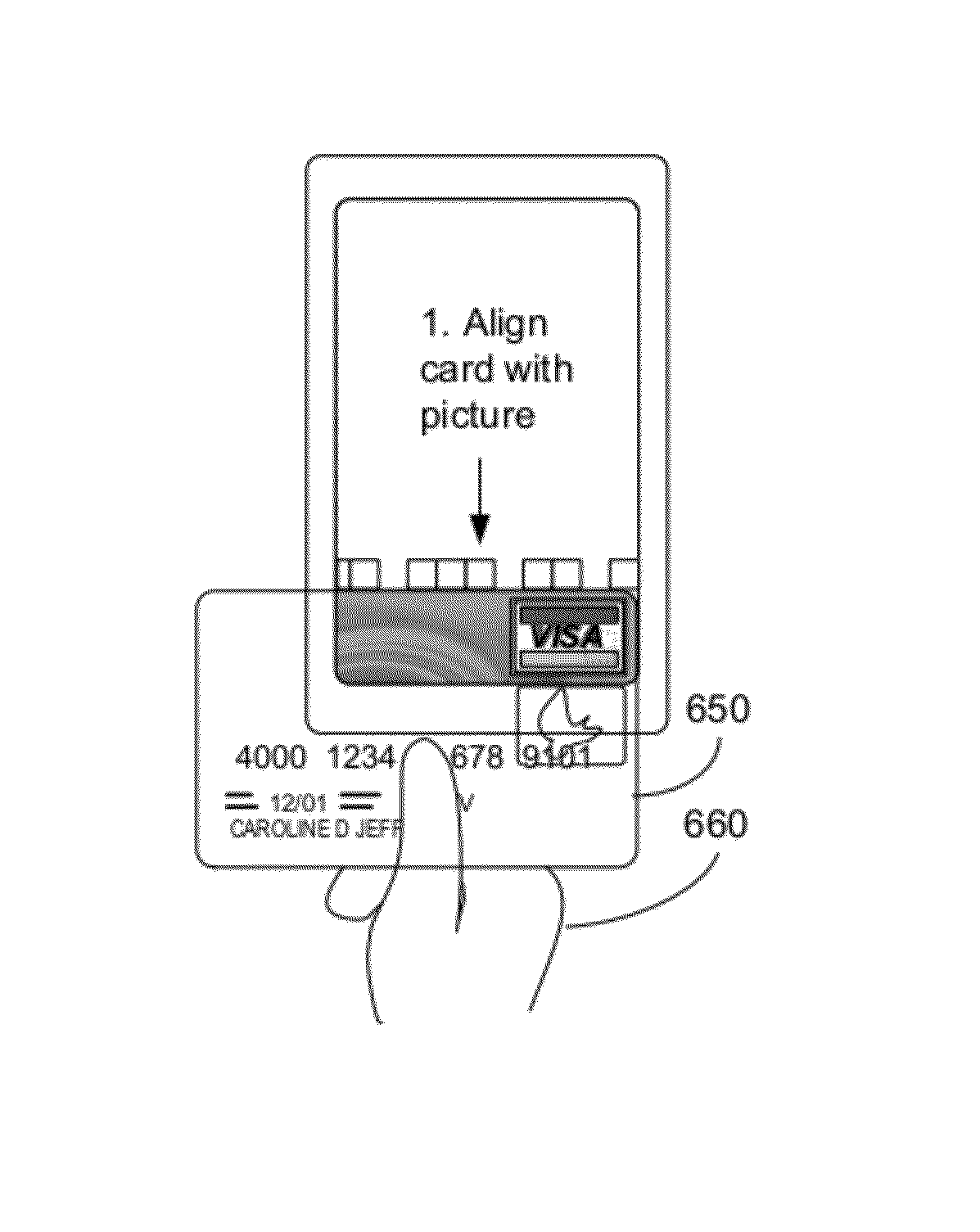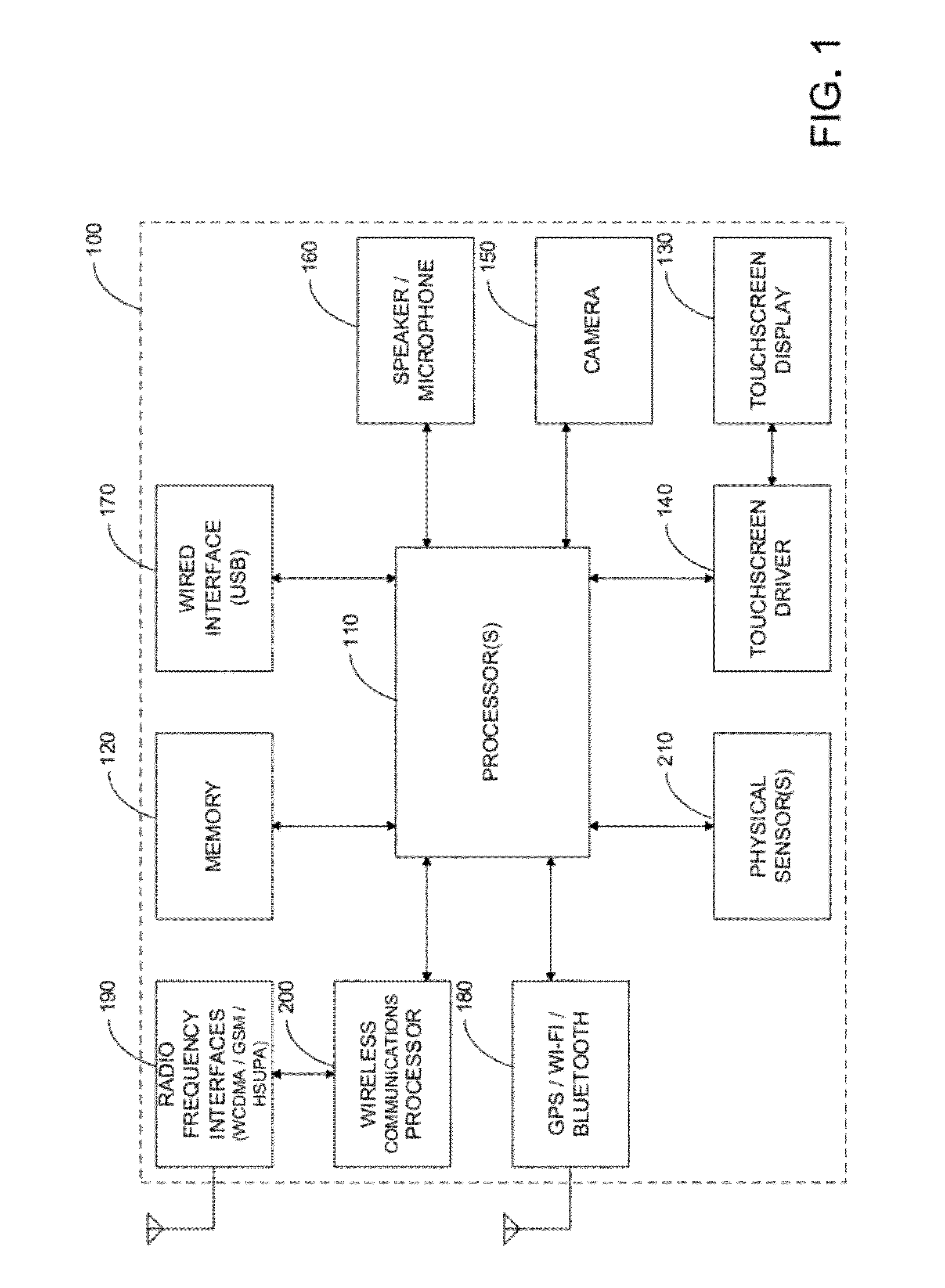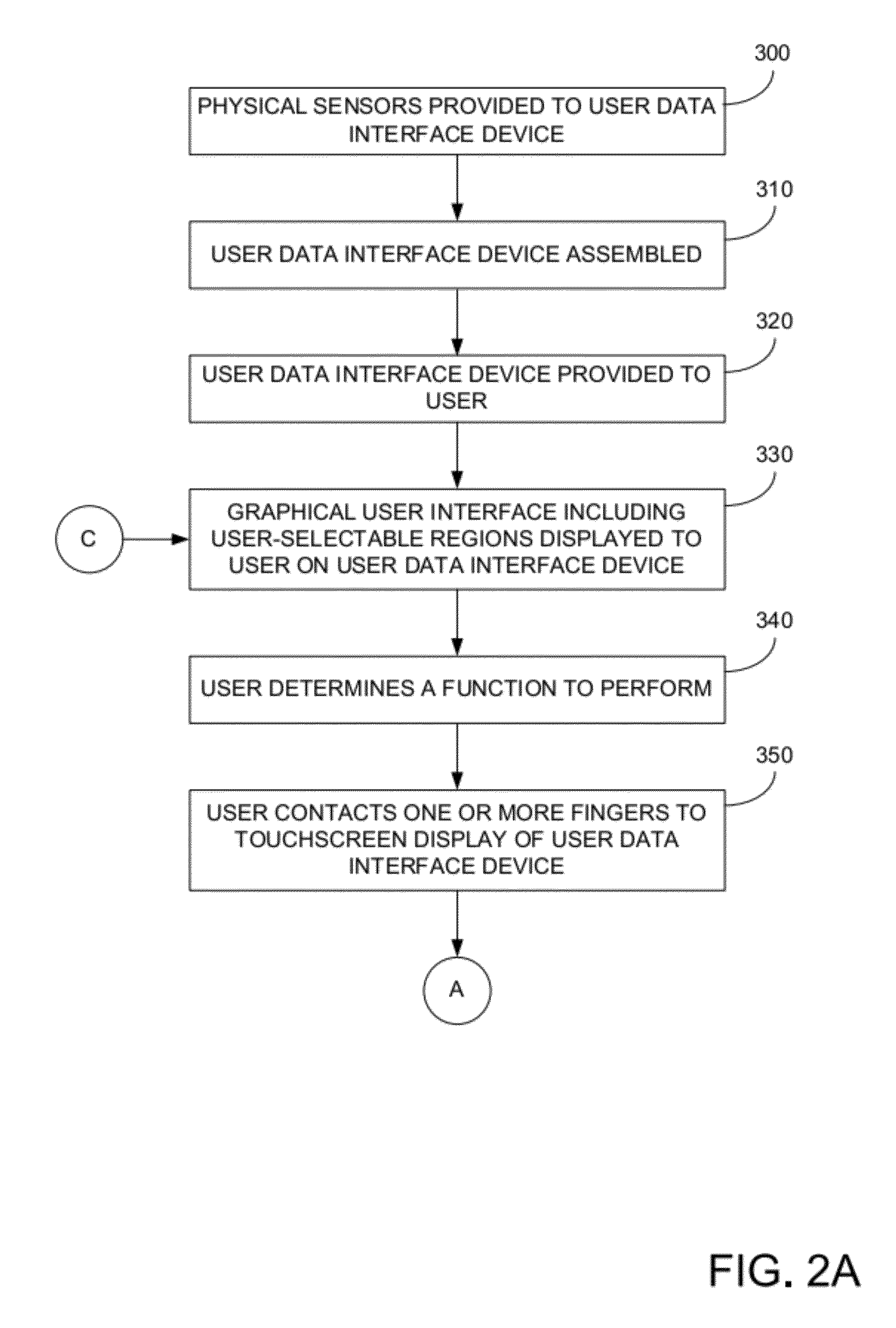[0018]Various embodiments of the present invention disclose a computer system such as a cell phone, internet access device, media player, or the like having a touch screen display and one or more physical sensors. In operation, when a user touches a location on the touch screen display, the function associated with the touched location is determined. The function may be running of an application program, selection of a function within an application program, and the like. In various embodiments, a type and / or magnitude of movement is determined by the one or more physical sensors also in response to the user touching the touch screen display. Based upon the type and / or magnitude of movement or combinations of movements, an input parameter or value may be determined for use by the selected function. Next, the function is initiated and given the input parameter or value.
[0019]Other embodiments of the present invention disclose a computer system such as a tablet computer, a smart phone, cell phone, or the like also having a display (e.g. touch screen) and one or more physical sensors. In operation, when a user touches a location on the touch screen display, the function associated with the touched location is again determined. The function may be running of an application program, selection of a function within an application program, and the like. In various embodiments, a type and / or magnitude of movement is determined by the one or more physical sensors also in response to the user touching the touch screen display. The type and / or magnitude of movement is then compared to one or more thresholds for type and / or magnitude of movement. In various embodiments, if the threshold is not exceeded, the function is inhibited, and when the threshold is exceeded (e.g. enough physical impulse), the function is performed.
[0020]Other embodiments of the present invention disclose a computer system such as a tablet computer, a smart phone, cell phone, or the like also having a touch screen display and one or more physical sensors. In operation, when a user physically perturbs the computer system, the perturbation will cause the computer system to perform a user-desired action. The perturbation may be a change in physical position or angular orientation of the computer system, a change in air pressure, a change in sensed magnetic field, or the like. Merely as examples, a user tapping upon a case of the computer system (device) (or a surface upon which the computer system is laying upon or may cause the computer system to take a picture; start or stop a timer; answer or disconnect a telephone call; invoke an application (e.g. knock-knocking on a computer system to invoke a VOIP application, a chat application, an IM, or the like); or the like. As other examples, a user positioning a credit card magnetic strip near the computer system may invoke a payment application and / or may cause the computer system to sense the data encoded on the magnetic strip; a sudden change in magnetic field may cause the computer system to shut down; a constant or sudden change in air pressure may invoke a pressure monitoring program (e.g. a scuba diving log application, a weather application); may cause the computer system to disconnect wireless transceivers and enter an “airplane mode;” or the like.
[0021]According to one aspect of the invention, a computer implemented method for processing data stored on a magnetic stripe of a user provided medium performed by a hand-held computer system programmed to perform the method is described. One process includes displaying, with a processor disposed within the computer system, a first alignment graphical user interface on a display of the computer system, wherein the first alignment graphical user interface includes a first visual alignment mark, wherein the first alignment mark is positioned on the display relative to a position of a MEMS magnetic field sensor disposed within the computer system at a first offset, wherein when a user aligns the user provided medium to the first alignment mark on the display, a portion of a first track of the magnetic stripe is disposed above the MEMS magnetic field sensor. A method may include sensing, by the MEMS magnetic field sensor, a plurality of magnetic data stored on the first track of the magnetic stripe, in response to the user aligning the user provided medium to the first alignment mark, and moving the user provided medium along the first alignment mark, and determining, with the processor, a plurality of user data stored on the first track of the magnetic stripe in response to the plurality of magnetic data stored on the first track.
[0022]According to yet another aspect of the invention, a hand-held computer system for processing data stored on a magnetic stripe of a user provided medium is disclosed. One apparatus may include a housing and a tangible memory for storing a plurality of non-transitory executable instructions. A device may include a display disposed within the housing, wherein the display is configured to display a plurality of graphical user interfaces to a user, and a MEMS magnetic field sensor disposed within the housing, wherein the MEMS magnetic field sensor is configured to sense magnetic data stored within a magnetic stripe of the user provided medium. A system may include a processor disposed within the housing and coupled to the tangible memory, the display, and to the MEMS magnetic field sensor, wherein the processor is programmed to perform a plurality of functions by the plurality of non-transitory executable instructions. In various embodiments, the plurality of non-transitory executable instructions may include executable code that programs the processor to display a first alignment graphical user interface on the display, wherein the first alignment graphical user interface includes a first visual alignment mark, wherein the first alignment mark is positioned on the display relative to a position of the MEMS magnetic field sensor at a first offset, wherein when the user aligns the user provided medium to the first alignment mark on the display, a portion of a first track of the magnetic stripe is sensed by the MEMS magnetic field sensor, and executable code that programs the processor to determine a plurality of user data stored on the first track of the magnetic stripe, in response to magnetic data stored within the first track of the magnetic stripe sensed by the MEMS magnetic field sensor when the user moves the user provided medium along the first alignment mark.
[0023]Various additional objects, features and advantages of the present invention can be more fully appreciated with reference to the detailed description and accompanying drawings that follow.
 Login to View More
Login to View More  Login to View More
Login to View More 


